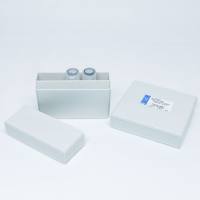Automated Planar Patch-Clamp
互联网
1762
Ion channels are integral membrane proteins that regulate the flow of ions across the plasma membrane and the membranes of
intracellular organelles of both excitable and non-excitable cells. Ion channels are vital to a wide variety of biological
processes and are prominent components of the nervous system and cardiovascular system, as well as controlling many metabolic
functions. Furthermore, ion channels are known to be involved in many disease states and as such have become popular therapeutic
targets. For many years now manual patch-clamping has been regarded as one of the best approaches for assaying ion channel
function, through direct measurement of ion flow across these membrane proteins. Over the last decade there have been many
remarkable breakthroughs in the development of technologies enabling the study of ion channels. One of these breakthroughs
is the development of automated planar patch-clamp technology. Automated platforms have demonstrated the ability to generate
high-quality data with high throughput capabilities, at great efficiency and reliability. Additional features such as simultaneous
intracellular and extracellular perfusion of the cell membrane, current clamp operation, fast compound application, an increasing
rate of parallelization, and more recently temperature control have been introduced. Furthermore, in addition to the well-established
studies of over-expressed ion channel proteins in cell lines, new generations of planar patch-clamp systems have enabled successful
studies of native and primary mammalian cells. This technology is becoming increasingly popular and extensively used both
within areas of drug discovery as well as academic research. Many platforms have been developed including NPC-16 Patchliner�
and SyncroPatch�
96 (Nanion Technologies GmbH, Munich), CytoPatch™ (Cytocentrics AG, Rostock), PatchXpress�
7000A, IonWorks�
Quattro and IonWorks Barracuda™, (Molecular Devices, LLC); Dynaflow�
HT (Cellectricon AB, M�lndal), QPatch HT (Sophion A/S, Copenhagen), IonFlux HT (Fluxion Bioscience Inc, USA), which have
demonstrated the capability to generate recordings similar in quality to that of conventional patch clamping. Here we describe
features of Nanion’s NPC-16 Patchliner�
and processes and protocols suited for this particularly flexible and successful high-throughput automated platform, which
is based on planar patch-clamp technology. However, many of the protocols and notes given in this chapter can be applied to
other automated patch-clamp platforms, similarly.







